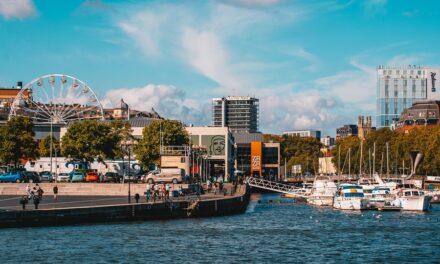SHEFFIELD
Sheffield first appears in FTHM Issue 79
Sheffield has been a city since 1843 and is known for metallurgy and steel-making. It is located in South Yorkshire, in England; its name comes from the River Sheaf which flows through the city and its approximate population is 584,853 making it the second largest city in the Yorkshire and Humber region.
The city has a very interesting history from the Upper Palaeolithic period and then a Pennine tribe called the Brigantes are thought to have constructed several hill forts in and around Sheffield, in the Iron Age. Once the Romans had left Britain, it is thought that the Sheffield area may have been part of the Brittonic kingdom of Elmet as there were two settlements there called Wales and Waleswood. However, it is clear that the larger settlements were of Anglo-Saxon and Danish origin. The nucleus of the city emerged after the Norman conquest of England when Sheffield Castle was built to protect the local settlements. The town gradually grew and a market was established on Castle Square in 1296, resulting in Sheffield becoming a market town. Interestingly, by the 14th century, Sheffield was already producing knives, and by the early 1600s, it had become the centre (outside of London) for the manufacture of cutlery. It is also worth noting that Mary, Queen of Scots was imprisoned in Sheffield Castle and Sheffield Manor between 1570 and 1584.
Sheffield really came to the fore during the Industrial Revolution when the production of steel was radically altered by the Crucible Steel process in the 1740s which meant a superior quality of steel could be produced (this technique was later replaced by the Bessemer converter) and also Sheffield Plate was developed at this time. Significantly, Stainless Steel was invented by Harry Brearley in 1912 and this meant good, cheap cutlery was available to the masses. Unfortunately, some export markets were lost during the recession at the end of the 18th century and beginning of the 19th century which resulted in poor living conditions and an outbreak of cholera which killed 402 people in 1832. Ironically, the population grew from 60,095 in 1801 to 451,195 in 1901 and meant that there was a need for more cheap housing and for reservoirs to be built on the outskirts of the city.
During the Second World War, Sheffield played a major role with its steel factories manufacturing weapons and ammunitions to help the war effort. Consequently, the city became a target for numerous bombing raids – especially between the 12th and 15th of December, 1940, which became known as the Sheffield Blitz and resulted in the loss of 600 lives and the destruction and damage of many buildings.
After the war, the city witnessed a regeneration with its slums being demolished and the introduction of a new road system. But increased competition from abroad and automation meant many steel mills closed resulting in job losses. It is worth noting that the city hosted the World Student Games in 1991, so as a result, new sporting facilities were built like the Sheffield Arena and the Don Valley Stadium.
The 21st century has been kinder to Sheffield and through initiatives like the Heart of the City Project, many public works have been undertaken like the Winter Gardens, Millennium Square and the Peace Gardens. Today, the city is vibrant and has experienced a strong economic revival with redevelopments such as the Moor redevelopment and the City Lofts Tower and the major employer (beside Forgemasters) are: call centres and the City Council which employs over 8,000 people. Normally tourism brings in more than £11.4 billion and creates employment for a further 15,000 people.
If you are prone to a spot of retail therapy, why not pay a visit to the Fargate or Devonshire Quarter or maybe go to Sheffield Moor Market which offers much fresh produce and international cuisine? – and of course, don’t forget to visit Meadowhall which is located to the north of the city.
Many of you reading this article will take an interest in professional sport and Sheffield will appeal to you as it has loads of such sport to offer: There are two major football teams in Sheffield United and Sheffield Wednesday (the derby is aptly called the Steel City Derby), the snooker world championships, rugby league, rugby union, American football, speedway and cycling – in 2014, it was the finish for Stage 2 of the Tour de France. It would be remiss of me not to mention the terrible Hillsborough Disaster in 1989, when 96 Liverpool supporters were crushed during the FA Cup semi-final.
Music plays a large role in the life of the city and many famous musicians have come from it: Joe Cocker, Artic Monkeys and Def Leppard to name a few. There are four excellent orchestras including a youth orchestra and successful choirs such as the Sheffield Philharmonic Chorus and the Chorus UK Community choir, and festivals like the Tramlines Festival. The city’s nightlife is good and if you are a student, you might enjoy a trip to West Street where there are many clubs, pubs and bars to entertain you.
The city boasts a wide choice of educational facilities which are available to all: 137 Primary Schools, 26 Secondary Schools, 5 Independent Schools, 12 Specials Schools and 2 University Technical Colleges. The two universities that serve the city are the University of Sheffield and Sheffield Hallam University which usually attract about 60,000 students each year. There are also 3 Further Education providers.
So, this is just a brief look at the city of Sheffield and if you think you would like to visit it, it is accessible by road, rail, canal or air. But do steel yourself for a good time!



Recent Comments